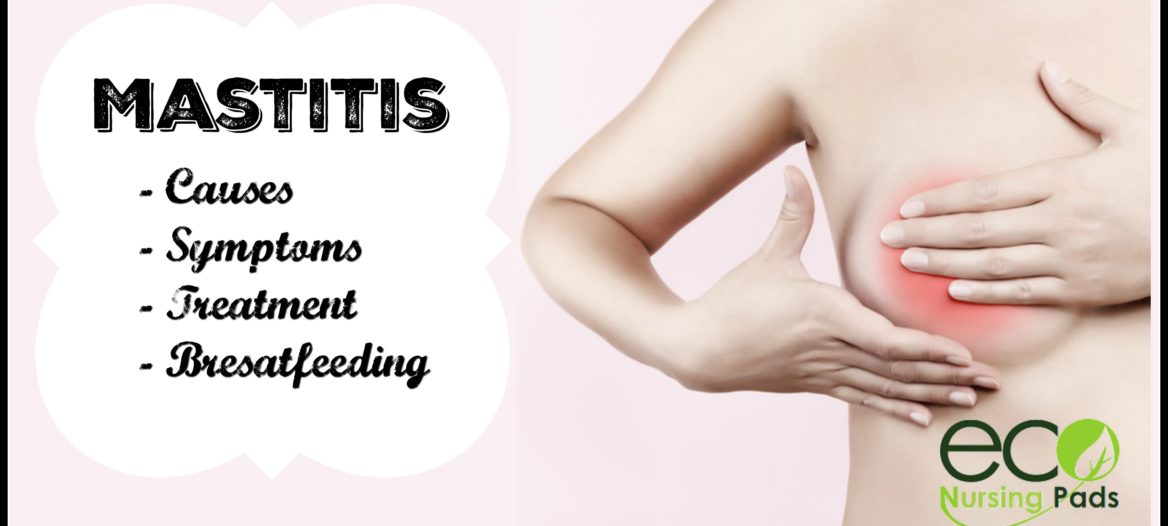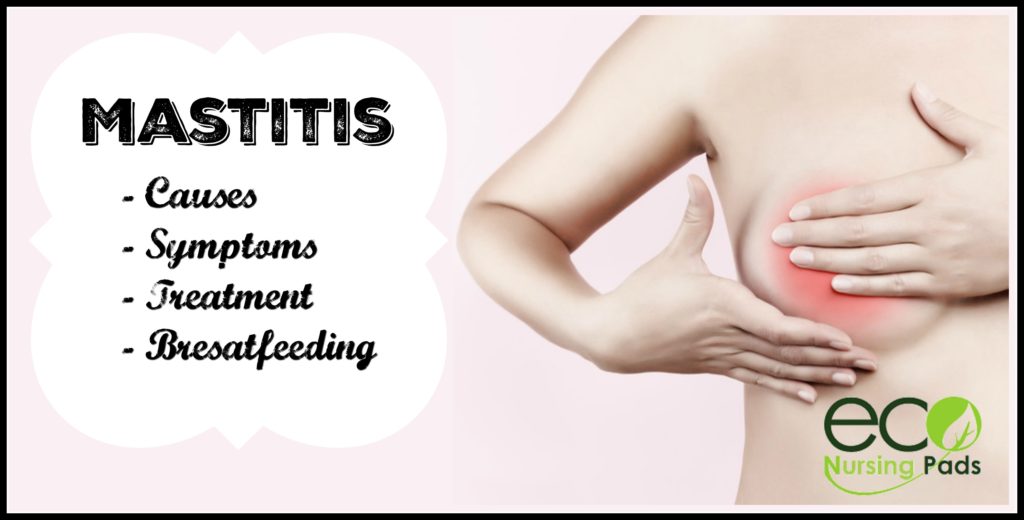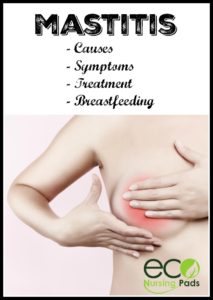Mastitis

Mastitis is another name for an infection in the breast. Often seen in lactating women, due to breast milk production and breastfeeding, it occurs when bacteria enters the nipple through an opening such as a crack. It can also be caused and worsened by infrequent breastfeeding, failure to empty the breast on a regular basis or failure to completely empty the breast. (1,2) Mastitis is characterized often by pain, swelling, redness, warm to the touch and can be accompanied by a fever and fatigue. (1,2,3) While mastitis can seem scary, it’s easily cleared up with medication and continuing to breastfeed and lactate helps to speed up the process.

Mastitis, otherwise known as a breast infection, can be painful and uncomfortable. Often found in breastfeeding Moms, this can be related to breast milk production in both nursing Moms and Moms who are trying to stop lactating. Not often found in Moms who are trying to increase breast milk production, but often in those with an increased supply of breast milk the first 6-12 weeks after giving birth, a plugged duct, injury to the nipple such as a crack or those who not breastfeeding often enough. Mastitis often begins as a painful area in one breast and symptoms may be flu-like. (1,2,3)
Symptoms of Mastitis:
- Usually starts as painful area in breast
- Red or warm to touch
- May be painful to touch
- Swollen breast
- Fever over 101, chills and body aches
- Swollen and/or painful lymph nodes in the armpit next to breast
- Hard painful lump
- Increased heart rate (1,2,3)
(Pin image below)

Risks for Devvelopment:
- If you have already had mastitis
- You delay and skip breastfeeding or pumping sessions
- You may be able to get a free breast pump
- Not emptying the breast regularly
- Failure to nurse frequently leading to engorgement
- Amenia, which can lower immune system
- Cracked areas in nipples (1,2,3)
Treatment for Mastitis
- Breastfeeding or pumping to help empty the breast
- Nursing frequently
- Wet or dry warm compresses
- Gentle massage to the area
- Sometimes, antibiotics are prescribed
- Rest, also a good opportunity to breastfeed in sidelying
- Staying well hydrated by drinking fluids
- Emptying the breast often (1,2,3)
Breastfeeding from the affected breast is safe for both you and baby. In addition, nursing frequently is recommended because emptying the breast helps clear up mastitis. Check the fit of your breast pump shields to make sure they aren’t limiting the flow of breast milk. If you pump, increasing pumping frequency, massaging breast and using warm compresses for about 15 minutes prior to pumping can also help empty your breasts completely. Wear washable breast pads for leaking breast milk. Breastfeeding should continue during these treatments and you can always check LactMed to see if your medication is safe to take while nursing. It is updated monthly and produced by the national institute of health.
Disclosure: This article makes no attempt to diagnose or treat any medical condition. Only your doctor can give a diagnosis and prescribe medications. This post may contain affiliate links.
1.http://www.mayoclinic.org/diseases-conditions/mastitis/basics/definition/con-20026633
2. http://www.webmd.com/parenting/baby/tc/mastitis-while-breast-feeding-topic-overview#1
3. http://www.llli.org/faq/mastitis.html
Photo of woman in collage credit © Can Stock Photo / eskymaks
